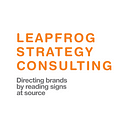Why creativity in advertising matter more than anything?
Are creative advertisements more compelling in tempting individuals to purchase products than advertisements that essentially contains product features or benefits? Various experiments have discovered that creative messages get more consideration and lead to positive mentalities about the products being promoted, however there’s no firm proof that shows how those messages impact the purchasing conduct. Essentially, there is minimal empirical research that attaches creative messaging to actual sales revenue. Because product and brand directors — and the organizations pitching to them — have come up short on a precise method to access the adequacy of their advertisements, creative publicizing has been a crapshoot.
What is creativity?
Psychology defines creativity as different thinking — in particular, the capacity to discover unordinary and non-obvious answers for an issue. One of the pioneers in the field was Ellis Paul Torrance, an American psychologist, who built up the Torrance Tests of Creative Thinking (TTCT), a battery of measures used to survey people’s ability for different thinking in the business world and in education. Torrance recorded reactions to test questions along five dimensions: fluency, originality, and elaboration (acquired from the work by Joy Paul Guilford, another American psychologist) as well as abstractness and what he called resistance to untimely closure.
Fluency alludes to the quantity of relevant thoughts and ideas proposed because of a given question, and originality quantifies how remarkable or uncommon the reactions are. Elaboration alludes to the amount of detail given in a reaction, and abstractness quantifies how much a slogan or a word moves past being a label for something concrete. Resistance from untimely closure quantifies the capacity to consider an assortment of variables when processing the data.
Creativity in Advertising
In the mid-2000s Torrance’s measures were adjusted for advertising by the Indiana University communications analyst Robert Smith and his associates. They changed the meaning of creativity to allude to “the degree to which an advertisement contains brand or executional components that are extraordinary, novel, uncommon, unique, remarkable, and so on”. Their objective was to gauge creativity using just those variables generally pertinent to a advertising setting. They concocted five elements of advertising creativity, they are:
Originality: A unique advertisement contains components that are rare or astounding, or that move away from the obvious and ordinary. The emphasis is on the uniqueness of the ideas or concepts contained in the advertisement. An advertisement can veer from standards or experiences by applying exceptional visual or verbal arrangements. An example of the advertisement campaign that excelled in creativity dimension was the astounding perception of within a vending machine in the Coca-Cola commercial “Happiness Factory.”
Flexibility: An advertisement scoring high on flexibility easily interfaces the product to a scope of various uses or ideas. For instance, a commercial for the Kraft Foods coffee brand Jacobs Krönung, which broadcasted in Germany in 2011 and 2012, demonstrated a man confronting different domestic difficulties (washing dishes, sewing a button on a coat, dicing an onion, and making a bed) while a gathering of ladies enjoyed in some coffee together.
Elaboration: Numerous advertisements contain startling details or extend straightforward thoughts so they become more intricate. One good instance is an advertisement for Ehrmann fruit yogurt — one of the main brands in Germany — in which a lady eating yogurt licks her lips to uncover that her tongue looks like a strawberry (Ehrmann made various versions of the spot for various flavors), impressively extending the possibility of fruitiness in yogurt.
Synthesis: This component of creativity is tied in with mixing or connecting typically unrelated objects or thoughts. For instance, Wrigley aired a commercial that included bunnies corralled like cows and took care of bananas, berries, and melons, making their buckteeth grow in as Juicy Fruit Squish chewing gum. The business joins unrelated objects (rabbits and chewing gum) to make a unique story line.
Artistic Value: Advertisements with a significant level of artistic value contain aesthetically engaging verbal, visual, or sound components. Their creation quality is high, their dialogue is crisp and clever, their colour palette is unique, or their music is enticing. Subsequently, customers frequently see the advertisements as a piece of art instead of an explicit attempt to sell something. One advertisement we can consider to explain this is was an animated commercial for Danone’s Fantasia yogurt that circulated toward the end of 2009. It demonstrated a lady floating on a flower petal through an ocean of Fantasia yogurt, encircled by flowers weighed down with fruits. Another advertisement was of Dairy Milk which aired the song ‘Kiss me, close your eyes miss me’ by Armaan Malik starring YouTuber Shirley Setia. The song became one of the trending songs among youngsters.
The dimensions have varying degrees of influence on the customers. Organisations have a lot of opportunity to get better in the creativity of advertisement campaigns. For example, the kinds of creativity that agencies presently underline are frequently not the best ones at driving deals. Therefore, the advertisement agencies should offices use creativity and it’s dimensions as per the likeliness of the target audience.
